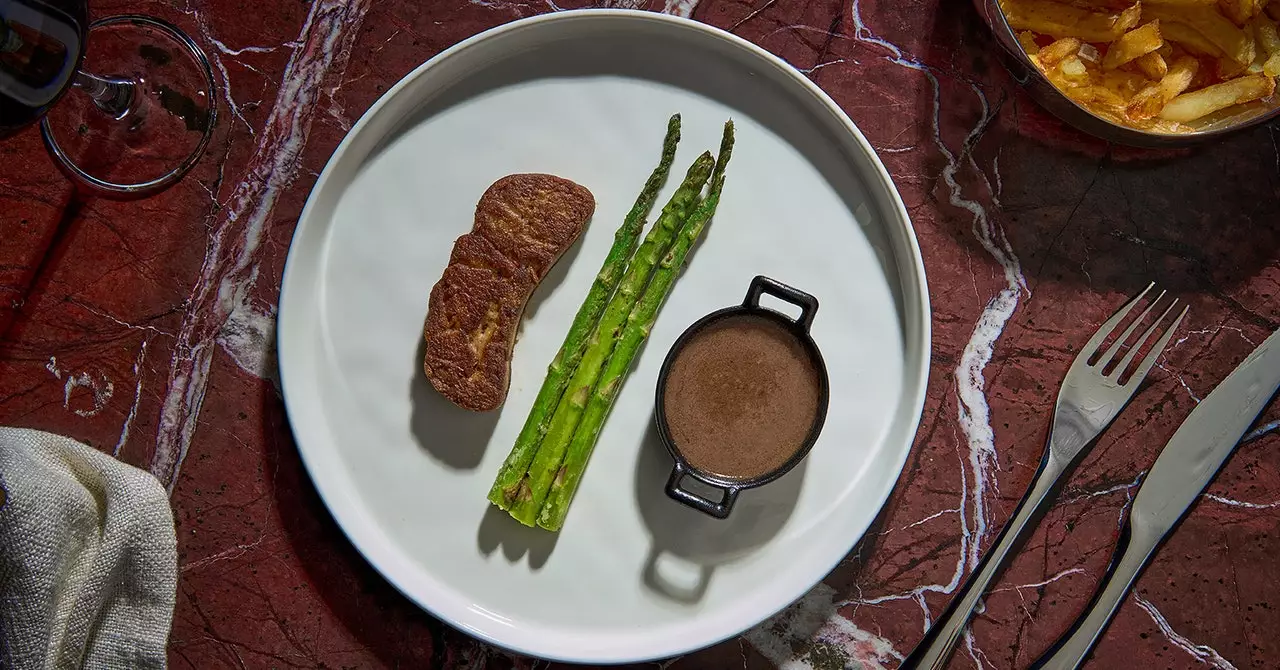The world of gastronomy is witnessing a seismic shift as culinary traditions are intertwined with cutting-edge biotechnology. Recently, a posh sushi bar in New York became the backdrop for a lavish event that exemplified this emerging trend. Presented by renowned sushi chef Masa Takayama, attendees were treated to an extravagant feast where the star ingredient was foie gras, cultivated from quail cells in a bioreactor. This innovative dish stemmed from the creative minds of Vow, an Australian company specializing in cultured meat, which has set its sights on introducing this sophisticated delicacy to select restaurants in Singapore and Hong Kong.
The allure of luxury dining has often revolved around exclusive ingredients—a trend that Vow aims to capitalize on. The meal featured not just quail foie gras, but also an indulgent selection of black truffles and peking duck tapas, presenting a juxtaposition of traditional opulence with modern culinary technology. Vow, led by its audacious CEO George Peppou, is repositioning cultivated meat as a high-end product, distancing itself from the typical narratives surrounding the industry that emphasize animal welfare and sustainability.
Peppou’s approach signifies a potential pivot for cultivated meat, exploring a niche in the luxury market rather than fighting against conventional meat production on cost efficacy alone. This decision is a bold departure from the industry norm, which has been wary of high pricing and is often focused on mass-market appeal. “I feel like the obituary has already been written for our industry,” Peppou contends, alluding to pervasive skepticism about the viability of lab-grown meats. This bold statement underscores the challenges that innovators in this sector face, but also highlights a growing enthusiasm for pushing the boundaries of what is possible in food production.
Despite the gastronomic eccentricities offered by Vow, the economic reality looms large. The cultivated meat industry is grappling with exorbitant production costs, a critical barrier to widespread acceptance and success. Industry experts estimate that producing lab-grown meat can range anywhere from $10,000 to $68 per pound, stymieing the push towards mainstream consumption where prices are more aligned with traditional meat products. These figures starkly contrast the cost of conventional chicken at approximately $2.67 per pound, emphasizing the uphill battle that cultivated meat companies face.
Even leading firms, such as Eat Just and Upside Foods, which have brought cultivated chicken to market, struggle to shift the narrative and pricing dynamics in their favor. Peppou, ever the provocateur, argues that the entire premise of producing chicken in bioreactors is flawed. With high foundational costs and the necessity for large-scale production to achieve price parity, the model requires significant reevaluation. Tapping into his experience, Peppou astutely recognizes that the techniques and ingredients used in high-stakes surgeries and pharmaceutical manufacturing are now being harnessed in culinary applications.
The Path Forward for Cultivated Meat
The nascent cultivated meat industry is at a crossroads that necessitates innovative thinking and a radical reinterpretation of its business model. The challenge comes not only from market competition but also from technological hurdles that remain unresolved. The extensive costs associated with bioreactor technology, combined with the need for scalable production methods, place significant pressure on those daring to cherish the dreams of a sustainable and luxury-driven meat market.
As the industry advances, challenges around financing, consumer acceptance, and regulatory frameworks must be approached with creativity and tenacity. Companies like Vow are not merely introducing a product; they are igniting discourse about what luxury food can embody in the 21st century. Their efforts could redefine the gastronomic landscape, combining the opulence that diners crave with a revolutionary approach to meat production that harkens back to traditional gastronomy while simultaneously pushing the dialogue forward into an era of unprecedented innovation.
In essence, cultivated meat holds the potential to transform dining experiences by marrying luxury with ethical considerations, but achieving viability at scale remains the ultimate hurdle. The industry’s evolution, epitomized by events like the one held in New York, hints at a future where culinary finesse meets technological advancement—an exciting prospect for food enthusiasts and ethical consumers alike.

